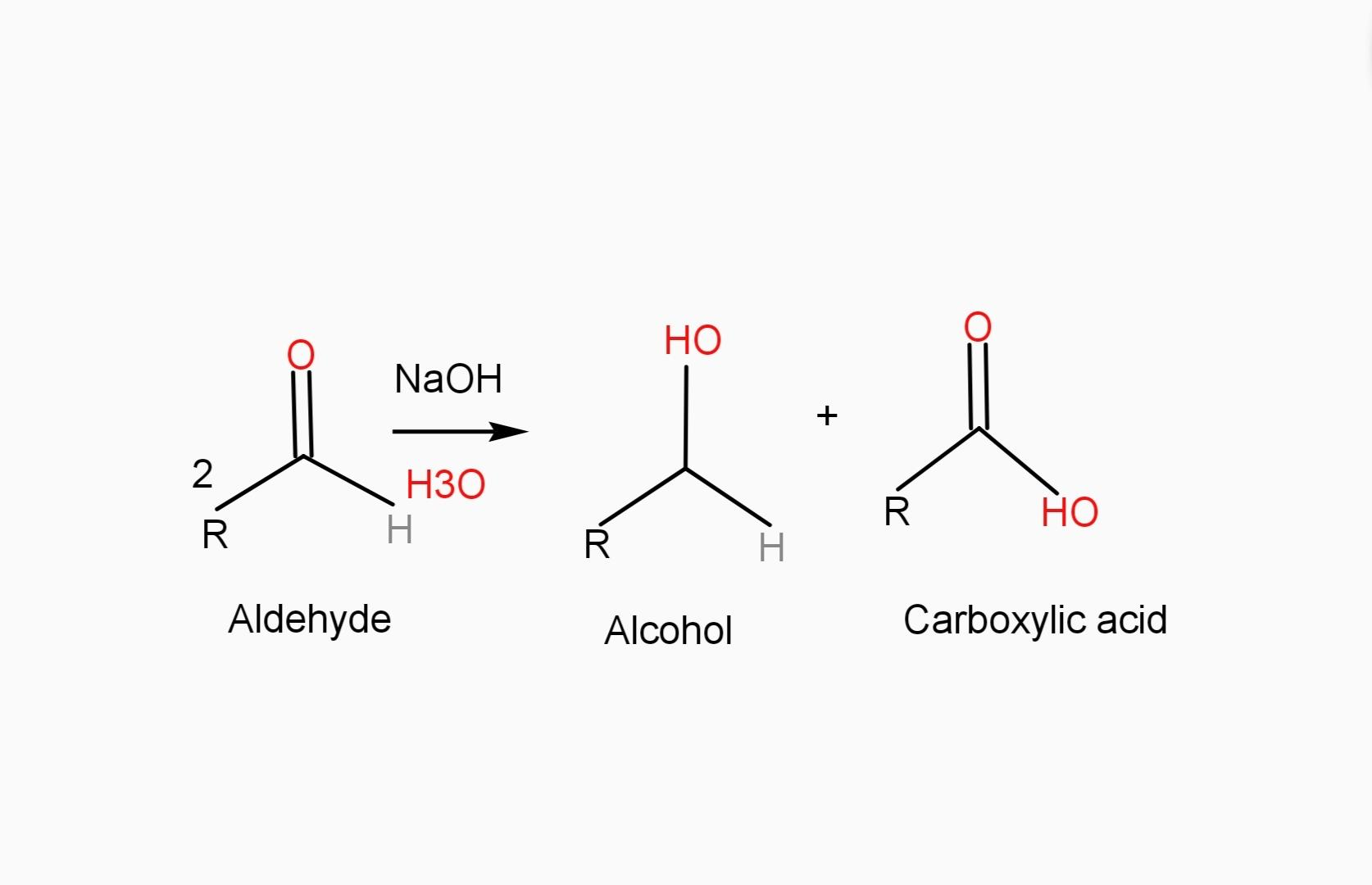
Explain the following name reaction with a suitable chemical reaction.
Cannizaro’s reaction.
Answer
217.2k+ views
Hint: This reaction is named after its discoverer Stanislao Cannizzaro. You should know that the products formed from this reaction are primary alcohol and a carboxylic acid. Now try solving the question.
Complete step by step answer:
> Let us know this reaction in detail.
The Cannizzaro reaction is a redox reaction in which two molecules of an aldehyde are reacted to produce a primary alcohol and a carboxylic acid using a hydroxide base.
> Let us see the mechanism of Cannizzaro reaction.
- You should know that the reaction begins with hydroxide attack on the carbonyl carbon followed by deprotonation to give a dianion. This unstable intermediate releases a hydride anion which attacks another molecule of aldehyde.
- In this process the dianion converts to a carboxylate anion and the aldehyde to an alkoxide.
The alkoxide in the reaction then picks up a proton from water to provide the alcohol as the final product, while the carboxylate is converted to the carboxylic acid product after acid work-up.
Let us understand better with the help of the reaction.

Example of Cannizzaro reaction , when formaldehyde is disproportionated to formic acid and methyl alcohol in strong alkali.
$HCHO\xrightarrow [ NaOH ]{ } HCO{ O }^{ - }{ Na }^{ + }+{ CH }_{ 3 }OH$
Note: The variations of the reaction improve the yield of the desired product. The Cannizzaro reaction can be used to influence a disproportionation of two molecules of a non-enolizable aldehyde to give a primary alcohol and a carboxylic acid.
Complete step by step answer:
> Let us know this reaction in detail.
The Cannizzaro reaction is a redox reaction in which two molecules of an aldehyde are reacted to produce a primary alcohol and a carboxylic acid using a hydroxide base.
> Let us see the mechanism of Cannizzaro reaction.
- You should know that the reaction begins with hydroxide attack on the carbonyl carbon followed by deprotonation to give a dianion. This unstable intermediate releases a hydride anion which attacks another molecule of aldehyde.
- In this process the dianion converts to a carboxylate anion and the aldehyde to an alkoxide.
The alkoxide in the reaction then picks up a proton from water to provide the alcohol as the final product, while the carboxylate is converted to the carboxylic acid product after acid work-up.
Let us understand better with the help of the reaction.

Example of Cannizzaro reaction , when formaldehyde is disproportionated to formic acid and methyl alcohol in strong alkali.
$HCHO\xrightarrow [ NaOH ]{ } HCO{ O }^{ - }{ Na }^{ + }+{ CH }_{ 3 }OH$
Note: The variations of the reaction improve the yield of the desired product. The Cannizzaro reaction can be used to influence a disproportionation of two molecules of a non-enolizable aldehyde to give a primary alcohol and a carboxylic acid.
Recently Updated Pages
Types of Solutions in Chemistry: Explained Simply

Addition of Three Vectors: Methods & Examples

Addition of Vectors: Simple Guide for Students

Algebra Made Easy: Step-by-Step Guide for Students

Relations and Functions: Complete Guide for Students

Analytical Method of Vector Addition Explained Simply

Trending doubts
JEE Main 2026: Application Form Open, Exam Dates, Syllabus, Eligibility & Question Papers

Derivation of Equation of Trajectory Explained for Students

Hybridisation in Chemistry – Concept, Types & Applications

Understanding the Angle of Deviation in a Prism

Understanding Collisions: Types and Examples for Students

How to Convert a Galvanometer into an Ammeter or Voltmeter

Other Pages
NCERT Solutions For Class 12 Chemistry Chapter 1 Solutions - 2025-26

NCERT Solutions for Class 12 Chemistry Chapter Chapter 7 Alcohol Phenol and Ether

NCERT Solutions ForClass 12 Chemistry Chapter Chapter 8 Aldehydes Ketones And Carboxylic Acids

JEE Advanced Marks vs Ranks 2025: Understanding Category-wise Qualifying Marks and Previous Year Cut-offs

Haloalkanes and Haloarenes Class 12 Chemistry Chapter 6 CBSE Notes - 2025-26

Solutions Class 12 Chemistry Chapter 1 CBSE Notes - 2025-26




